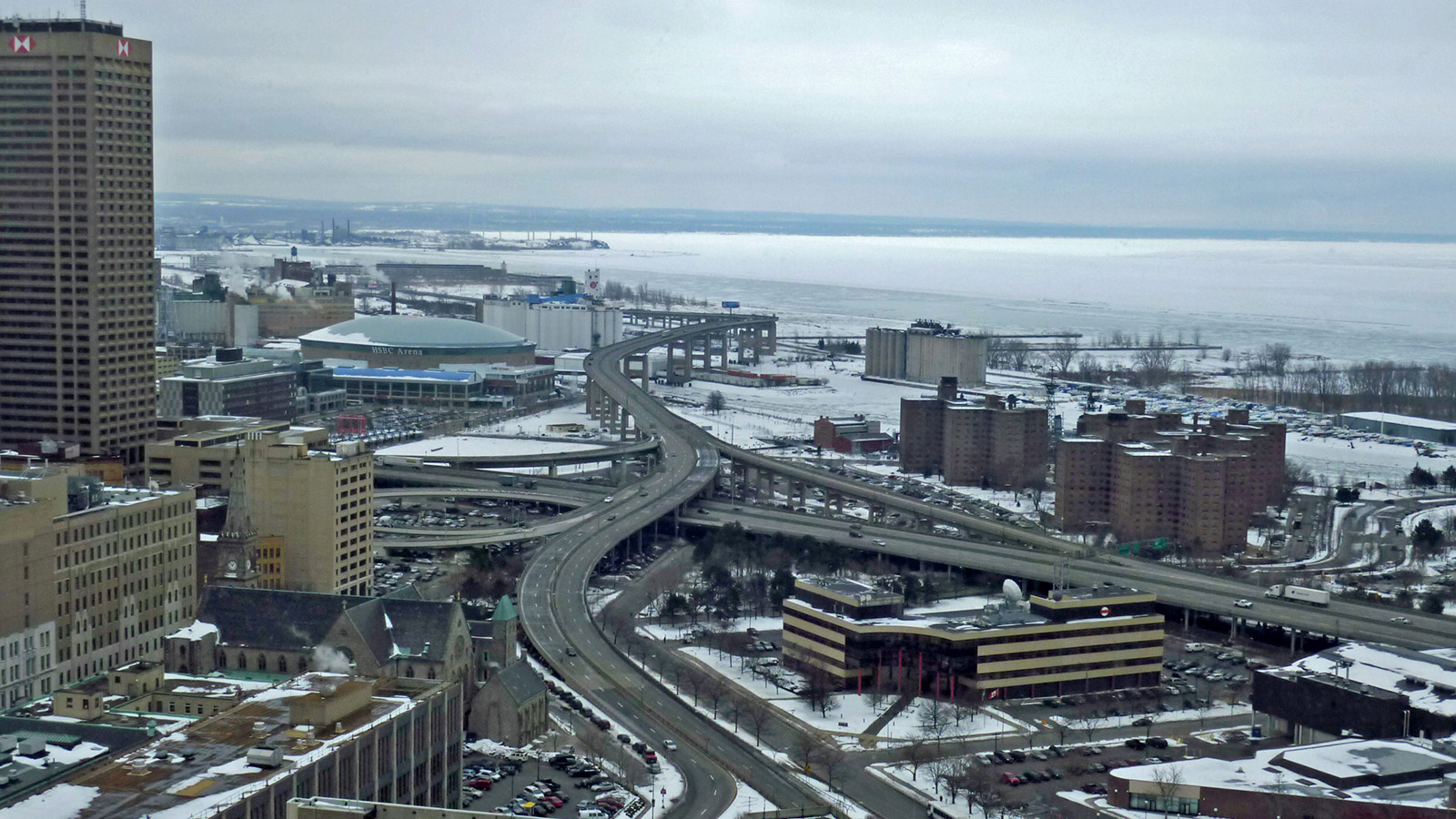
Payton ChungRoute 5/Skyway blights the waterfront in Buffalo, N.Y.
Urbanist policies are often thought of in the positive: building bike lanes, light-rail lines, pedestrian plazas, and mixed-use developments. But the suburban sprawl that swept across our landscape left a lot of detritus, so urbanists also have to focus on getting rid of the negative — in many cases, this means highways.
It’s no coincidence that the watershed moment in American urbanism wasn’t the initiation of a new urbanist project. Rather, Jane Jacobs rallied her Greenwich Village neighbors to stop the Lower Manhattan Expressway from ever being built. Other cities that abandoned their most ill-conceived highway plans in the face of community resistance, like Vancouver and San Francisco, are noted today for their high quality of life and low carbon footprint.
But in much of North America, limited-access highways tore through downtowns and surrounding urban neighborhoods. Designed to bring suburban drivers into and through inner cities, these elevated behemoths consumed everything in their paths and cast shadows over what was left. They separated residents from their communities, waterfronts, and public amenities. Now, as they age, it has come time for cities to determine what to do with them: rebuild, replace, or tear down.
Every year, the Congress for a New Urbanism issues a report, “Freeways Without Futures,” that lists highways deserving of demolition. In its recently released 2014 edition, the group writes: “CNU advocates for replacing urban freeways with surface streets, boulevards and avenues as the most cost-effective, sustainable option for cities grappling with aging grade separated roads. This has the added benefit of providing significant opportunities to heal local street networks and improve regional traffic dispersion.”
The 10 freeways on the list, and an additional five that have been targeted by campaigns for removal, have much in common: Built in the two decades after World War II, and thus nearing the end of their design life, they degrade their environs. Several were conceived by New York’s infamous master builder Robert Moses. One, in Buffalo, actually split in half a park designed by the great landscape architect Frederick Law Olmstead. Another, which bears Moses’ name, separates the city of Niagara Falls from its famous attraction. Here’s the full list:
“Freeways without futures”
- I-10/Claiborne Overpass, New Orleans
- Route 5/Skyway, Buffalo
- I-81, Syracuse
- Gardiner Expressway, Toronto
- Inner Loop, Rochester
- I-70, St. Louis
- I-280, San Francisco
- I-375, Detroit
- Terminal Island Freeway, Long Beach
- Aetna Viaduct, Hartford
“Campaigns to watch”
- I-345, Dallas
- I-894/Sheridan Expressway, Bronx, New York City
- I-710 Extension, Alhambra and Pasadena
- NYS Route 198/Scajaquada Expressway, Buffalo
- Robert Moses Parkway, Niagara Falls
If one of these highways is near you, you might want to get involved in efforts to remove it and replace it with a reconnected street grid. Urban history provides ample evidence that determined citizens can shape their surroundings for the better.


